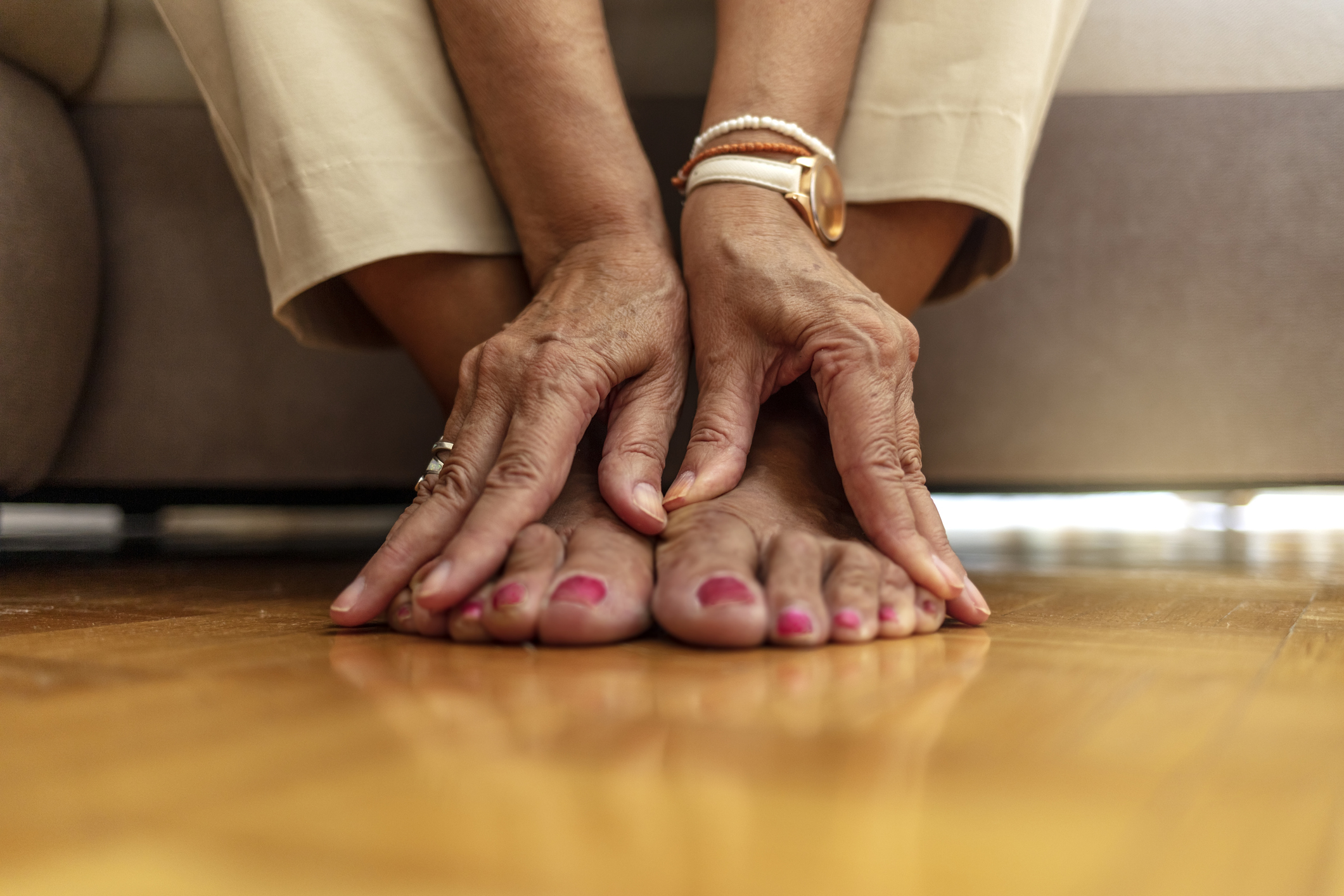
Proper senior footcare can improve overall health and wellness for older adults.
It is difficult to put your best foot forward when soreness plagues every step. Foot problems are normal when we grow older, which is understandable; there are so many delicate bones that carry the weight of our bodies. Additionally, because they are far away from the heart, our feet are almost certainly not receiving as much oxygen-rich blood as required to stay healthy – particularly if a health condition like diabetes limits blood circulation to the feet.
However, many older adults opt to simply just grin (or grit their teeth) and bear it, rather than looking for footcare guidance. This might lead to not just growing discomfort, but compromised mobility and balance problems. Difficulties with the feet may also be a warning sign for other health conditions that require diagnosis and treatment.
Watch out for These Everyday Senior Foot Issues
Foot pain might result from:
- Dried-out skin. Throughout the cold, dry winter season, dry skin is normal. On the feet, it can cause cracks which are not only painful, but can lead to infection.
- Callouses and corns. These dense spots of dead skin on the feet usually develop due to irritation from shoes that fit poorly.
- Bunions. In contrast to corns and callouses, bunions are the product of changes to bone structure. They can be extremely painful, frequently developing on the outer part of the big toe joint.
- Hammertoes. As opposed to all the toes lying flat, hammertoes are deformed and point up. You may notice a corn with the deformed toe.
- Arthritis. Arthritis can strike any of our joints, including the feet, resulting in both mobility issues and pain.
- Plantar fasciitis. Plantar fasciitis is a result of bony growths formed when a ligament on the heel becomes irritated. Walking and even simply standing could be extremely painful with this particular problem.
- Ingrown toenails. Toenails that grow at a different angle than normal can become ingrown in the flesh of the toe, often calling for a surgical procedure to remove.
- Fungal infections. Damp feet make a good breeding ground for fungus, which can develop between the toes.
Dr. Said Atway, clinical professor of podiatry at The Ohio State University Wexner Medical Center, sees seniors dealing with these types of issues on both ends of the spectrum: either highly active and developing injuries from overuse, in addition to people that have a less active lifestyle suffering from limited blood flow to the feet and poor overall health. He highlights the importance of proper shoes for older adults, who should keep from going barefoot or wearing shoes without proper support, such as flip flops.
To find the best-fitting, most comfortable shoes, he suggests:
- Shopping for shoes later in the day, as gravity causes the feet to expand a little during the day
- Trying out shoes by walking in them for at least 20 minutes; giving them a test run on a carpeted area at home should prevent any wear on the soles of the shoes, so they can be returned if uncomfortable
- Seeking the recommendation of a podiatrist regarding the best style of shoe for a senior’s specific concerns
Keeping the feet clean, moisturized, and dry, and performing daily inspections to check for problems, is recommended for all older adults. An annual visit with the podiatrist can also help circumvent problems.
Grace Home Care, a provider of at home care Topeka families trust, is here to help older adults kick up their heels in many ways: ensuring good foot hygiene, providing transportation to search for shoes or to the podiatrist, taking walks together to improve blood flow, and more! Give us a call at 785-286-2273 for a free in-home consultation today.
